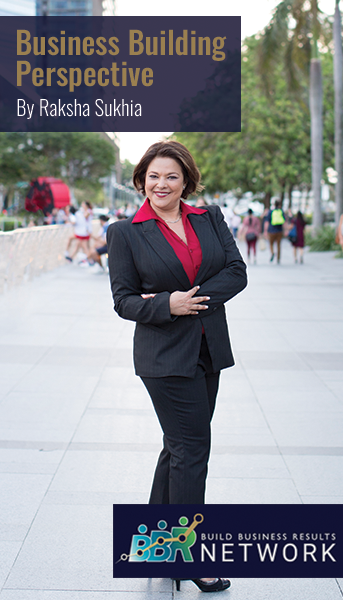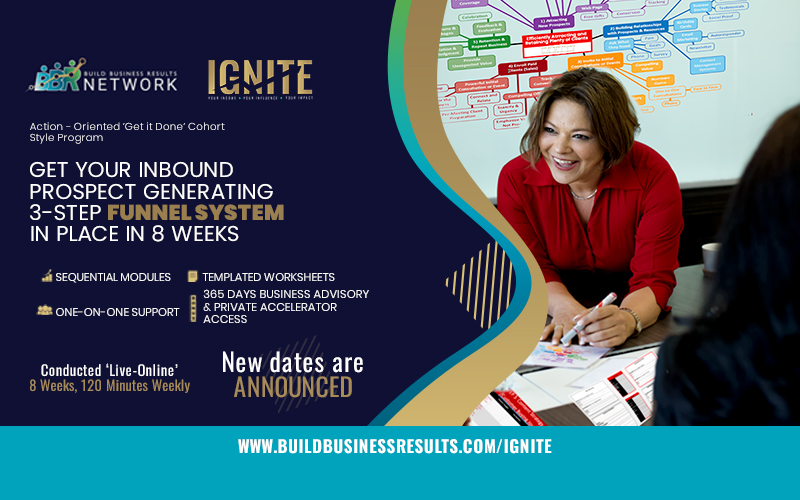Three Ways to Make Your Digital Event as Engaging and Effective as In-Person

In these difficult times, online virtual events are becoming quite popular. Nowadays, like everything else, your customers are becoming unique as well. That is why, they need to be also approached in a certain way. A great way to do that is, creating an engaging virtual attendee experience. But how?
Try to make connections with your audience right after creating an amazing first impression. However, there isn't much time to connect individually to understand them enough. So, the quicker you show them that you understand the pain point of customers, the easier it will be to go deeper and truly knowing that what will motivate them to act.
In this article, you will find more effective steps like these to prepare yourself for virtual networking by using insights.
And if you want to Learn how to Leverage the Power of Direct Magnetic Marketing for Your Business, join our IGNITE Your 'Solo' or Small Business in 8 Weeks program.
See you on the action-field,
Raksha Sukhia, SMB Growth Expert,
Founder BBR Network. #bbrnetwork
Especially in our current climate—with more and more businesses considering virtual event opportunities and digital alternatives—event attendees' attention is being pulled in multiple directions.
Today, setting your business apart requires not only a differentiated product or service but also your unique people. Ultimately, what will set you apart and attract an audience is whom potential customers are able to engage and connect with online.
As marketers consider their options for providing digital event opportunities, one question is top of mind: How do you create an engaging virtual attendee experience?
In any virtual setting, it's understandably harder to feel truly connected to the other people "in the room." Which is why it's even more important for businesses to think about the role their own sales and marketing leaders and teams play in contributing to attendees' virtual event experiences.
They are the people at the forefront of connecting with attendees, and you need to figure out how they can build meaningful connections virtually as they typically would in-person.
Let's explore three ways businesses can support sales and marketing teams in taking a people-first approach to their virtual event and showing up more human in a digital setting.
1. Make virtual networking more human
Nothing can replace face-to-face communication, especially at events. It's where connections are made, and first impressions can turn into long-lasting business relationships.
In our new reality, though, there are ways we can replicate the power of in-person communication through the screen—and it's something your sales and marketing leaders, in particular, should be prepared to do.
First, consider the logistics of your digital event. Allow for one-on-one networking opportunities outside of presentations and for content-sharing, and incorporate other avenues of interaction to get people engaged at your event, whether it's live polling during presentations or live Q&As with speakers after they present.
Next, consider how your go-to-market teams might need to shift their approach for a virtual setting. Believe it or not, conversing and networking digitally don't come naturally to everyone. The digital barrier can cause conversations to feel strained and unproductive.
So consider how you can help your teams to still have impactful virtual conversations, and give them guidance on remaining authentic while acknowledging our new reality.
For example (as obvious as it sounds), start by reminding them to turn on their video! If there's one thing that hasn't changed in a virtual setting, it's that making eye contact is still key to building relationships with those you're meeting with. What might seem like such a small act is actually a significant opportunity to connect with your prospects and customers.
2. Use data to ignite meaningful conversation
In a virtual setting, there isn't as much time to connect with attendees to understand who they are and why they're at your conference. Yet, people go to conferences (in-person or virtual) to make connections that can lead to real results—whether that's learning fresh tactics and strategies to bring back to their team, or discovering a new technology that can effectively solve a company's problem, or make connections that can lead to business opportunities.
The quicker you can show during an event that you understand the pain point of customers or prospects, the easier it will be to go deeper into truly knowing what will motivate them to act.
Which is why equipping sales and marketing teams with intent data is more important than ever in a virtual setting. That data will allow them to make the best of their time with attendees, get to understanding what they're interested in most, and discover what pain point they're trying to solve.
Those options will allow you to create a more tailored experience and equip Sales and Marketing with the information they need to create a more tailored experience.
Consider using technology that allows you to capture greater insights from your attendees as they register for your digital event, including what they would like to see and hear about. Also, if your in-person event is now a multiday series of webinars or digital presentations, use technology that allows you to track the attendee as they "check in" to different webinar sessions across multiple days.
Those options will allow you to create a more tailored experience and equip Sales and Marketing with the information they need to create a more tailored experience.
3. Consider an account-based marketing approach to events
Though the future of larger tentpole conferences is unknown, one thing that is likely true both for in-person and for virtual events is that more targeted, highly personalized content will keep attendees engaged and lead to more productive conversations.
Especially in a virtual setting, people need to feel connected to the content on their screen—as if they're receiving a more personalized experience to keep them tuned in to your digital content.
In our new digital reality, smaller and more intimate events that take an account-based approach will allow for better conversation between sales and marketing teams and a set list of priority contacts within your business's target accounts. It will also create a space for these teams to be able to share more targeted content with attendees, and deliver the message they know will resonate best with the group at hand.
At my company, we're seeing customers like Rockwell Automation put this approach into action by using the insights shared throughout the events cycle (via custom registration forms and past event engagement) to send highly personalized communications and promote relevant sessions based on their attendees' noted interests.
* * *
Today's reality has made human connection more valuable than ever, and there is one aspect of events, whether digital or in-person, that's sure to leave a lasting impression: its people.
By preparing teams for virtual networking, by using data and insights to quickly identify attendees' interest and pain points, and by taking an account-based approach to events, sales and marketing teams can use virtual events to build authentic business relationships that lead to real business results.
SignUp for Weekly Ezine

Related Article
What’s a Good Landing Page Conversion Rate?
Business Agility Is the New Norm. Do You Have What It Takes?
Tags
#BBR Network, #LinkedIn #Social Media Marketing, #Profitability, #Small Business Growth, #Small Business Marketing and Sales, #SMB, #SME, are virtual events effective, B2B, best virtual events, biggest virtual summit, Build Business Results, Build Business Results (BBR), Build Business Results (BBR) Mastermind., Build Business Results (BBR) Network Business Advisory, digital marketing institute blog, dos and don ts for virtual events, examples of virtual conferences, fun virtual events, gamification for virtual events, how to host a virtual event, how to host a virtual networking event, how to join a virtual event on facebook, how to make virtual events more engaging, how to make your virtual event stand out, how to network at virtual events, marketing industry insights, moving events online, moving events to virtual, physical event definition, physical event meaning, sbc virtual event, tips for virtual events, trends in online marketing, types of virtual events, virtual conference best practices, virtual event best practices, virtual event coordinator, virtual event examples, virtual event graphics, virtual event ideas for college students, virtual event marketing strategy, virtual event presentation, virtual event project plan, virtual event statistics, virtual events articles, virtual events calendar, virtual events coronavirus, virtual events examples, virtual events ideas, virtual events platform, virtual fundraising event ideas, what makes a successful online event










